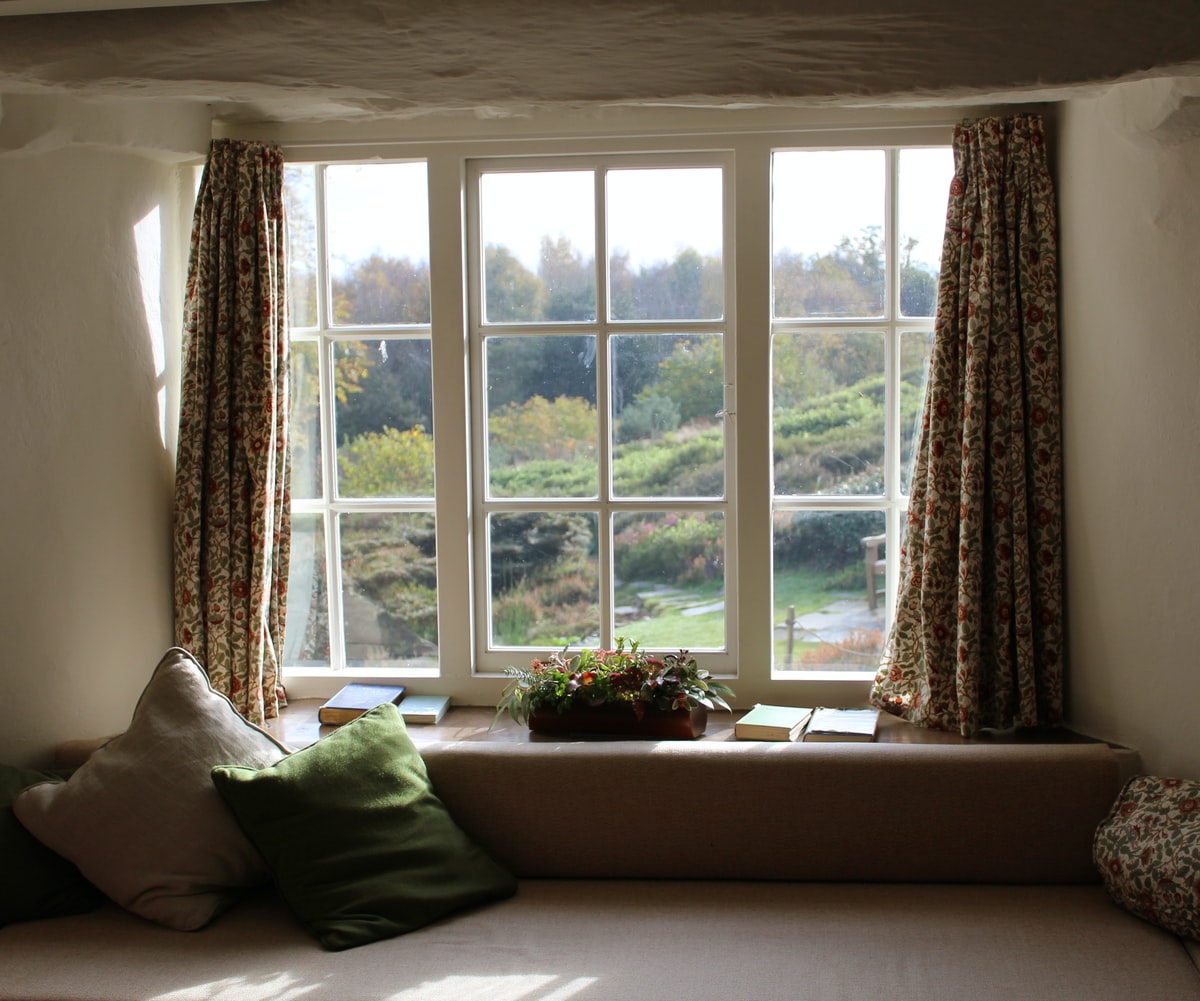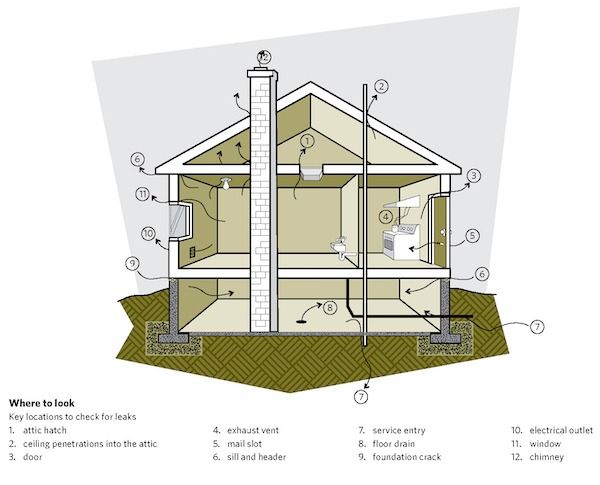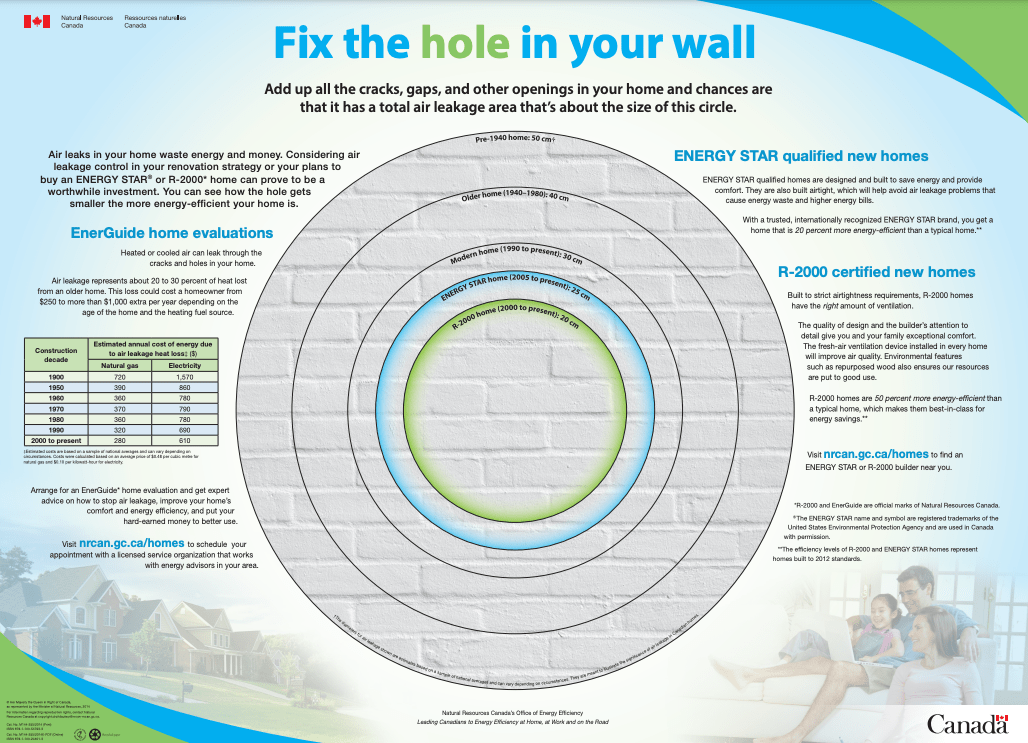
If you’ve been paying attention to the ever-evolving home building requirements throughout BC, you may have noticed that municipalities are asking more and more from their builders to achieve high levels of airtightness. Most people in the industry view this as a positive development that will expand the knowledge base and improve the quality of work delivered across the industry, but there are still stakeholders who don’t fully appreciate why there is so much emphasis on achieving sufficiently high levels of airtightness in buildings. There are a many reasons why it is important to build airtight, and in this article, we will briefly describe three of them.
Durability – Moisture in wall cavities
Air leakage through the building enclosure can lead to significant amounts of moisture transported into wall cavities, which can lead to mould growth and decay of building components. Air leakage typically contributes to moisture issues in roof and wall assemblies when warm moist interior air condenses onto cold surfaces within the building envelope assemblies (exterior walls, attic ceilings, roofs, exposed floors, foundation walls, etc.)
The mechanisms by which condensation forms within envelope assemblies often depends on where the dew point is located, but also where the primary air barrier is placed within the assembly (i.e. whether the air barrier is located towards the interior or exterior to the structure). Two examples of how this can occur are described below.
For interior air barrier systems, such as the interior sealed polyethylene approach, warm moist interior air enters the wall cavity through detail interfaces, punctures, tears, and other possible deficiencies in the air barrier. When this air comes in contact with a cold surface such as plywood sheathing that is not insulated from the exterior, the air cools below its dew point temperature and the water vapour within the air condenses to water droplets that deposit within the assembly.
In exterior air barrier systems, such as the sealed sheathing wrap approach, deficiencies in the air barrier can permit cold exterior air to enter the wall cavity and cool down components in the assembly near the point of cold air entry. When warm, moist, interior air comes in contact with these cooled surfaces, this air can cool below its dew point temperature and will deposit liquid water within the wall cavity.
In a cold wet climate such as that in the Pacific Northwest, moisture caused by air leakage can accumulate in building envelope assemblies from fall until spring with little to no opportunity to dry, leading to mould growth and decay in materials susceptible to moisture damage. The amount of moisture that can be transported through air leakage is surprisingly large when compared to moisture transported by vapor diffusion: air movement (air leakage) accounts for 98% of all vapour movement in wall cavities[1].

Wasted Energy
Energy Advisors obsess over airtightness because we know that planning for and paying careful attention to airtightness during construction of a new building is the simplest, most cost-effective way to reduce energy consumption in your home. Why spend thousands of extra dollars to oversize your HVAC equipment and then continue spending hundreds and thousands of your hard earned dollars every year to heat outdoor air when you can just do a good job of air sealing in the first place?
A common metric for measuring airtightness is air changes per hour (ACH). Older homes built before the 1970’s will typically have air leakage rates of 8-12 ACH. For comparison, the airtightness requirement for new construction of Part 9 buildings in BC’s Energy Step Code is 3 ACH or less for Step 2 and less than 1 ACH for Step 5. As shown in BC Housing’s Illustrated Guide Achieving Airtight Buildings, an example wood frame multi-unit residential building in Southwest B.C. with an airtightness score at 5 ACH will have approximately 2.1 times greater heating energy demand than the same building with 1 ACH.
Not only does air leakage take money out of the pockets of home owners, it exacerbates our reliance on fossil fuels for heating our homes and emits needless greenhouse gas emissions, which contribute climate change, ocean acidification, and a number of other environmental impact categories.
Make sure when shopping around for a builder you ask them what their most recent ACH result was. Or what their air barrier strategy is. If they don’t know, it might be wise to look elsewhere.

Occupant comfort
Have you ever been in an old building on a cold, blustery day and heard a gust of wind outside and literally felt the wind’s chill coming through the building? You don’t need to quantify the heat transferred through the wall or the amount of moisture transported into the wall cavity from this event to empathize with a homeowner grappling to understand why they have to put up with this discomfort just because the homebuilder didn’t pay close enough attention to detail. Homeowners and renters spend so much of their hard-earned income on their home and we as building professionals, owe it to them to ensure they get a quality product and that they are comfortable in their homes.
Still think that BC municipalities are asking too much of their builders in adhering to increasingly stringent airtightness requirements? Check out Natural Resources Canada’s publication Keeping the Heat In and BC Housing’s Illustrated Guide Achieving Airtight Buildings for more information about airtightness in buildings and to see how simple it can be to achieve high airtightness results in new construction with just a little bit of planning ahead.
It should be noted that any conversation about tightness should mention the importance of ventilation as the two go hand in hand. We’ll talk about ventilation in an upcoming post…… stay tuned.
[1]“Moisture Control” retrieved from ://www.energy.gov/energysaver/weatherize/moisture-control
